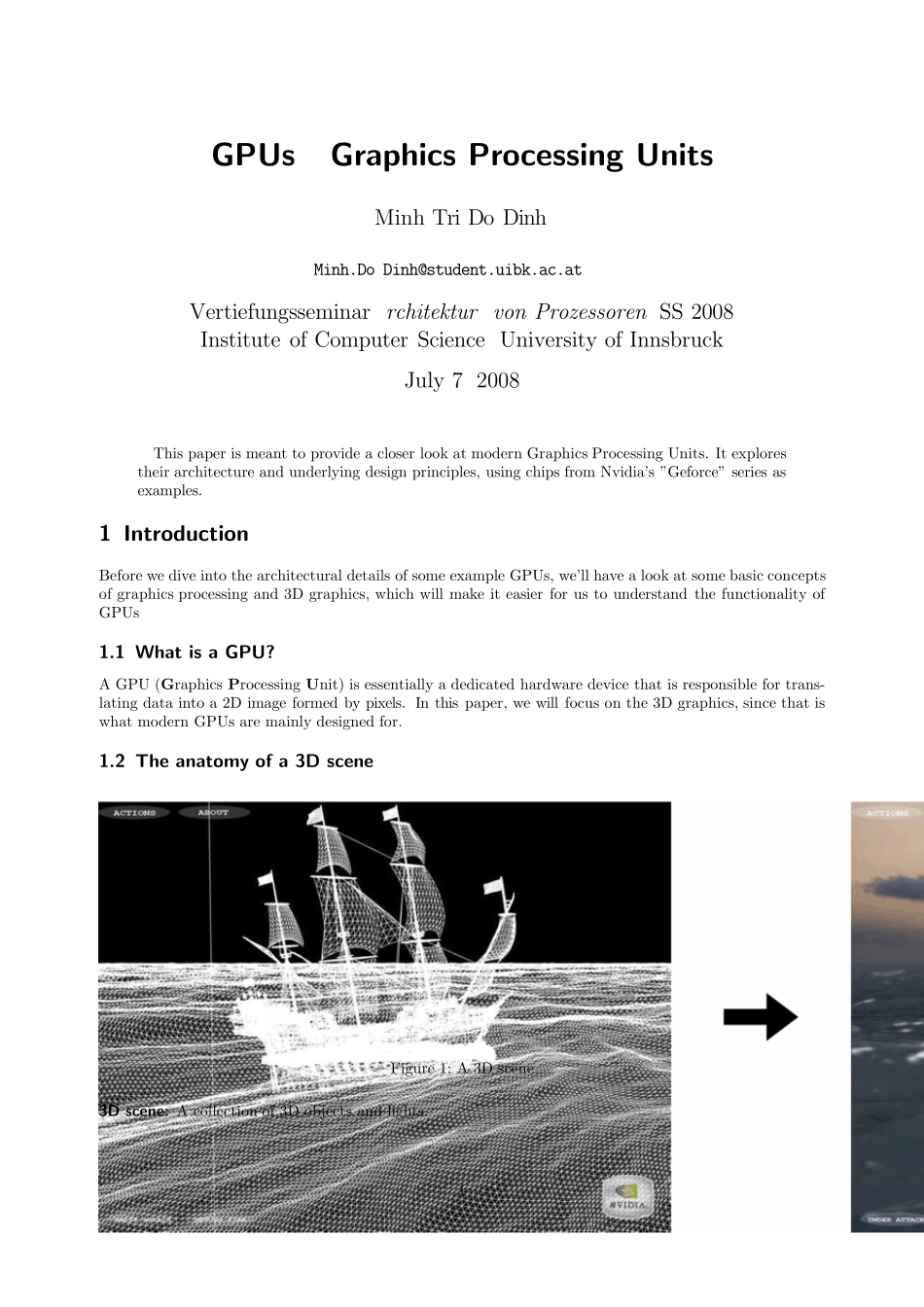GPUs - Graphics Processing UnitsMinh Tri Do DinhMinh.Do-Dinh@student.uibk.ac.atVertiefungsseminar Architektur von Prozessoren, SS 2008Institute of Computer Science, University of InnsbruckJuly 7, 2008This paper is meant to provide a closer look at modern Graphics Processing Units. It explorestheir architecture and underlying design principles, using chips from Nvidia’s ” Geforce” series asexamples.1 IntroductionBefore we dive into the architectural details of some example GPUs, we’ll have a look at some basic conceptsof graphics processing and 3D graphics, which will make it easier for us to understand the functionality ofGPUs1.1 What is a GPU?A GPU (Graphics Processing Unit) is essentially a dedicated hardware device that is responsible for trans-lating data into a 2D image formed by pixels. In this paper, we will focus on the 3D graphics, since that iswhat modern GPUs are mainly designed for.1.2 The anatomy of a 3D sceneFigure 1: A 3D scene3D scene: A collection of 3D objects and lights.1Figure 2: Object, triangle and vertices3D objects: Arbitrary objects, whose geometryconsists of triangular polygons. Polygons are composed ofvertices.Vertex: A Point with spatial coordinates and other information such as color and texture coordinates.Figure 3: A cube with a checkerboard textureTexture: An image that is mapped onto the surface of a 3D object, which creates the illusion of an objectconsisting of a certain material. The vertices of an object store the so-called texture coordinates(2-dimensional vectors) that specifyhow a texture is mapped onto anygiven surface.Figure 4: Texture coordinates of a triangle with a brick texture2In order to translate such a 3D scene to a 2D image, the data has to go through sever...


